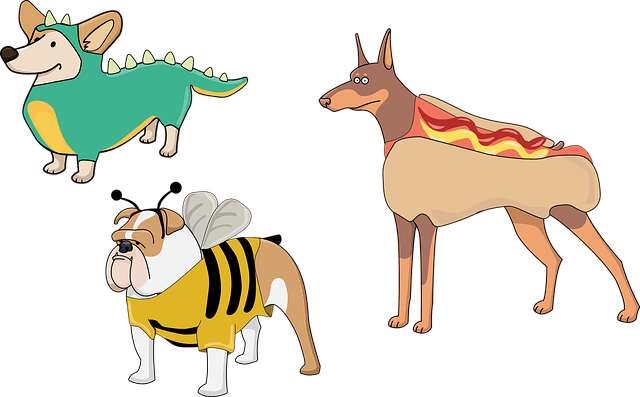
Keeping our four-legged family members healthy and safe this holiday
By Sue Baldani
Halloween, with its costumes and candy, is a fun holiday for both kids and adults. Lighted jack-o’-lanterns and spooky decorations are also a big part of the magic.
Unfortunately, this is also a holiday that carries some hazards for your four-legged family members. Dr. Lauren Stayer and Dr. Erin Miller from Pawtown Veterinarian Care in Bend, which opened in March of this year, work diligently to keep the animals in their care healthy and happy.
“Lauren and I have been friends and colleagues for eight years,” says Dr. Erin. “We wanted to start a practice that felt personable, like a family practice – where our patients, clients and staff felt cared for.”
Here, they provide great tips on keeping pets safe this Halloween:
Candy
After the candy has been brought home and sorted, and little ones (and their parents) have had their fill, make sure to stash the leftovers someplace safe. “Chocolate, especially dark chocolate, is toxic to pets, and if they ingest the wrappers of the candy, that can also cause problems,” says Dr. Lauren. “Not all candy is toxic, but a lot of it can cause vomiting or diarrhea, upset stomach and other issues.”
Candy containing artificial sweeteners (like Xylitol) and macadamia nuts are also toxic to pets. Pets ingesting any of the above should be taken to a veterinarian right away. “Time is important,” says Dr. Erin. “You can also call the *Pet Poison Helpline (855-764-7661) or the *ASPCA Animal Poison Control (888-426-4435) for advice on whether to seek care.”
Pet Costumes
“Let’s face it, pets in costumes are adorable!” says Dr. Erin. “But the majority of our pets do not like dressing up. Costumes can be uncomfortable, cumbersome or even dangerous.” If you want to dress up your pet, here are her recommendations:
– Do not leave a costumed pet unsupervised;
– Choose a costume that does not limit mobility or vision;
– Avoid anything that could shift or tighten around a limb or neck;
– Make sure the costume is not too hot or too heavy; and
– Limit the amount of time your pet is in costume.
Adds Dr. Lauren, “I would also avoid anything with very small pieces that the pet could chew off and ingest, which could then cause a foreign body blockage.”
Human Costumes
Many animals may become fearful or even aggressive when they see someone in unfamiliar attire. “Costumes can be scary to pets, especially when they can’t see people’s faces,” says Dr. Lauren.
“Consider keeping your pet in a separate room or in a crate during trick or treating hours,” says Dr. Erin. “Or have a designated family member keep the pet on a leash with them inside the house.”
This will also prevent them from running out the door every time it’s opened. “It’s important to have your pet chipped,” says Dr. Lauren. “If they have a microchip and they’re found, then any clinic or humane society can scan the chip and be able to contact the owner.” There are also GPS collars to track your pet.
Decorations
“Consider your pets when choosing Halloween decorations,” says Dr. Erin. “Avoid candles, and be mindful of electrical wires or things that are easy to knock over. Also consider how noise and flashing lights may affect your pet.”
To find out more ways to keep your pets happy and healthy, go to https://pawtownvet.com/.
*Fees may apply.
Written for Bend Lifestyle magazine in Oregon.
Thank you for the great reminders of how to keep our pets safe and happy during the Halloween holiday(and beyond). It’s a fun time and our pets will say Thank You !!!
LikeLiked by 1 person